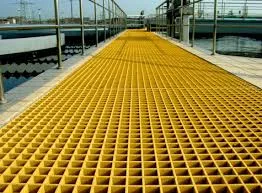
-
 Afrikaans
Afrikaans -
 Albanian
Albanian -
 Amharic
Amharic -
 Arabic
Arabic -
 Armenian
Armenian -
 Azerbaijani
Azerbaijani -
 Basque
Basque -
 Belarusian
Belarusian -
 Bengali
Bengali -
 Bosnian
Bosnian -
 Bulgarian
Bulgarian -
 Catalan
Catalan -
 Cebuano
Cebuano -
 China
China -
 China (Taiwan)
China (Taiwan) -
 Corsican
Corsican -
 Croatian
Croatian -
 Czech
Czech -
 Danish
Danish -
 Dutch
Dutch -
 English
English -
 Esperanto
Esperanto -
 Estonian
Estonian -
 Finnish
Finnish -
 French
French -
 Frisian
Frisian -
 Galician
Galician -
 Georgian
Georgian -
 German
German -
 Greek
Greek -
 Gujarati
Gujarati -
 Haitian Creole
Haitian Creole -
 hausa
hausa -
 hawaiian
hawaiian -
 Hebrew
Hebrew -
 Hindi
Hindi -
 Miao
Miao -
 Hungarian
Hungarian -
 Icelandic
Icelandic -
 igbo
igbo -
 Indonesian
Indonesian -
 irish
irish -
 Italian
Italian -
 Japanese
Japanese -
 Javanese
Javanese -
 Kannada
Kannada -
 kazakh
kazakh -
 Khmer
Khmer -
 Rwandese
Rwandese -
 Korean
Korean -
 Kurdish
Kurdish -
 Kyrgyz
Kyrgyz -
 Lao
Lao -
 Latin
Latin -
 Latvian
Latvian -
 Lithuanian
Lithuanian -
 Luxembourgish
Luxembourgish -
 Macedonian
Macedonian -
 Malgashi
Malgashi -
 Malay
Malay -
 Malayalam
Malayalam -
 Maltese
Maltese -
 Maori
Maori -
 Marathi
Marathi -
 Mongolian
Mongolian -
 Myanmar
Myanmar -
 Nepali
Nepali -
 Norwegian
Norwegian -
 Norwegian
Norwegian -
 Occitan
Occitan -
 Pashto
Pashto -
 Persian
Persian -
 Polish
Polish -
 Portuguese
Portuguese -
 Punjabi
Punjabi -
 Romanian
Romanian -
 Russian
Russian -
 Samoan
Samoan -
 Scottish Gaelic
Scottish Gaelic -
 Serbian
Serbian -
 Sesotho
Sesotho -
 Shona
Shona -
 Sindhi
Sindhi -
 Sinhala
Sinhala -
 Slovak
Slovak -
 Slovenian
Slovenian -
 Somali
Somali -
 Spanish
Spanish -
 Sundanese
Sundanese -
 Swahili
Swahili -
 Swedish
Swedish -
 Tagalog
Tagalog -
 Tajik
Tajik -
 Tamil
Tamil -
 Tatar
Tatar -
 Telugu
Telugu -
 Thai
Thai -
 Turkish
Turkish -
 Turkmen
Turkmen -
 Ukrainian
Ukrainian -
 Urdu
Urdu -
 Uighur
Uighur -
 Uzbek
Uzbek -
 Vietnamese
Vietnamese -
 Welsh
Welsh -
 Bantu
Bantu -
 Yiddish
Yiddish -
 Yoruba
Yoruba -
 Zulu
Zulu
fiberglass food grade equipment a closer look at its features and ...
A Closer Look at Fiberglass Food Grade Equipment Features and Advantages
In the food industry, the quality of equipment plays a crucial role in ensuring safety, efficiency, and compliance with health regulations. Among various materials used for manufacturing food-grade equipment, fiberglass is gaining traction due to its unique properties and advantages. This article delves into the features of fiberglass food-grade equipment and why it is becoming a preferred choice in the food processing sector.
What is Fiberglass?
Fiberglass, or glass-reinforced plastic (GRP), is a composite material made from a polymer matrix reinforced with fine glass fibers. It is well known for its lightweight nature, durability, and impressive strength-to-weight ratio, making it suitable for a wide range of applications, particularly in environments that demand high standards of hygiene and sanitation.
Key Features of Fiberglass Food Grade Equipment
1. Non-reactive Surface One of the most important aspects of food-grade equipment is its ability to resist chemical reactions with food products. Fiberglass surfaces are non-reactive, meaning they do not leach harmful substances into food items. This property ensures that the integrity and safety of food products are maintained, making fiberglass an ideal choice for food processing and storage applications.
2. Durability and Corrosion Resistance Fiberglass is known for its resistance to corrosion and wear-and-tear. Unlike metals, which can rust or corrode over time when exposed to moisture and various chemicals, fiberglass maintains its structural integrity even in harsh environments. This durability extends the lifespan of equipment, reducing the need for frequent replacements and maintenance.
fiberglass food grade equipment a closer look at its features and ...

3. Temperature Tolerance Fiberglass can withstand a wide range of temperatures, which is vital in food processing where extreme heating or cooling may occur. This property allows fiberglass equipment to be used in various stages of food production, from cooking to storage, without compromising performance.
4. Lightweight Nature Being significantly lighter than metal counterparts, fiberglass equipment is easier to handle, transport, and install. This feature leads to increased efficiency in the food processing environment, as it reduces labor costs and simplifies maintenance procedures.
5. Ease of Cleaning In the food industry, cleanliness is paramount. Fiberglass equipment has a smooth, non-porous surface that simplifies cleaning processes. The absence of cracks and crevices prevents the accumulation of bacteria, thus enhancing food safety standards.
6. Customization Options Manufacturing processes allow for easy customization of fiberglass equipment to meet specific requirements of different food processing applications. This versatility means that businesses can acquire equipment tailored to their exact needs, which is a significant advantage over standard stainless steel or plastic options.
Conclusion
The adoption of fiberglass food-grade equipment in the food industry is on the rise, and for good reasons. With its non-reactive surface, durability, temperature tolerance, lightweight nature, ease of cleaning, and customization options, fiberglass stands out as a modern solution for food processing needs. As food safety regulations become increasingly stringent, investing in high-quality fiberglass equipment may well be a strategic decision for businesses looking to optimize their operations and ensure the safety of their products.









